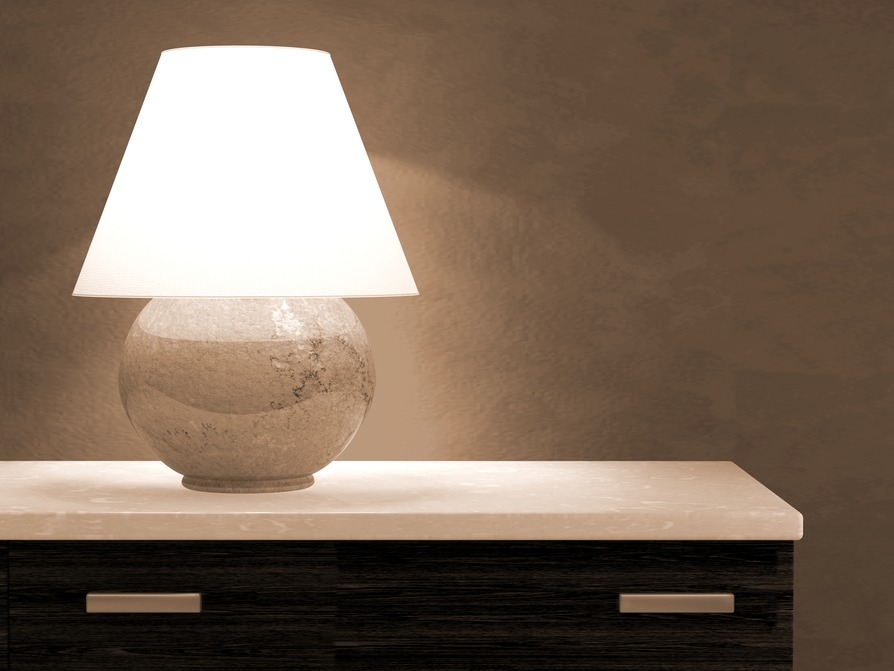Dirty light fixtures not only look bad, they reduce brightness and waste energy. Here’s how to clean your fixtures and brighten the room to boot.
Granted, cleaning light fixtures is a hassle that requires a stepladder and a steady hand. But it’s a necessary spring-cleaning chore that freshens your home and gives you the light you’re paying for.
Dirty bulbs shed 30% less light than clean ones, says the U.S. Department of Energy. Add a dusty, dead-bug riddled cover, and you’ve got an automatic dimmer, whether you want one or not.
Got a dirty light fixture? We’ve got your cleaning tips.
Chandeliers
Yes, you should dust your crystal chandeliers weekly, especially during pollen season. But once or twice a year, you should make those crystals sparkle with a thorough wash.
1. If the chandelier isn’t too big, take it down and lay it on top of a towel spread on a table. If it’s huge, hire a handyman to bring it down, or grab a stepladder and clean it while it hangs.
2. Take a picture of the chandelier before you start cleaning. That way you’ll remember where each crystal belongs if you take them off during cleaning, says Meg Roberts, president of Molly Maid cleaning service.
3. Mix a solution of 1 ounce mild dish soap with ¼ cup white vinegar and 3 cups water.
4. Add to a spray bottle.
5. Spritz each crystal.
6. Let dry and polish with a microfiber cloth.
Related: A Healthy Shine: Green Cleaning Products for Your Kitchen
Light Bulbs
These days, bulbs have long lives thanks to new LED and CFL technology. They’re bound to get dirty and should be cleaned.
Mary Beth Gotti, manager of the GE Lighting Institute, says a thorough wipe with a dry cloth is the best way to get rid of dust and dirt.
“If you use a damp cloth, you can get water into crevices in the lamp that can damage electronics,” Gotti says. Also, don’t spray cleaning solutions directly onto the light bulb, which could damage the bulb.
Most important: Turn off the electricity to the fixture before messing with the bulbs. To be extra cautious, turn off the circuit breaker, or put a piece of tape over the switch so no one else turns it on while your working.
Ceiling Fixtures
Ceiling fixtures can be a dusty, grimy, buggy mess. Carefully take down the fixture cover and slide it into a sink full of soapy water. Dry and shine with a microfiber cloth.
Avoid the temptation to put glass fixtures into the dishwasher. The glass can shatter, ruining your fixture and your dishwasher.
Pendant Lights
These usually are easier to reach than ceiling fixtures, so you can clean in place.
Turn off the light, let bulbs cool, then spray and wipe the outside of globes with a microfiber cloth and cleaning spray.
Wipe bulbs and extension rods and cables with a dry cloth.
Recessed Lights
Dust weekly with a long-handle duster, such as a Swiffer, that traps dust and cobwebs. For a more thorough cleaning, wipe the insides of canisters and the bulbs with a microfiber cloth or a slightly damp rag.
Caution: Before cleaning, make sure the electricity is off and the bulb is cool.
Ceiling Fans
Dust the lights on ceiling fans weekly when you clean the fan blades. When a bulb goes out and you have to climb a ladder anyway, clean globes and bulbs with a microfiber cloth. If the globes are really dirty, take them down and clean with soapy water or a cleaning solution.
When removing or returning globes or bulbs, be sure not to steady yourself by grabbing fan blades, which will turn if touched.
Tricks of the Trade
1. Dryer sheets are low-cost alternatives to microfiber clothes. They’re great for dusting bulbs.
2. Wear goggles when dusting or spritzing overhead fixtures to prevent dust or cleaning solution from hurting your eyes.
3. If you’re having trouble removing the bulb in a recessed light, cut a 12-inch strip of duct tape, and fold it over the bulb so that the ends act like handles that are easier to grip than the glass.
By: Lisa Kaplan Gordon© Copyright 2015 NATIONAL ASSOCIATION OF REALTORS®

